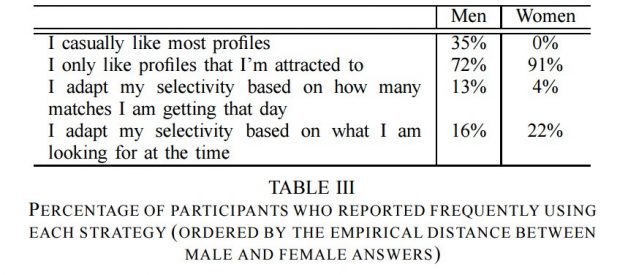SCROLL ALL THE WAY DOWN FOR 3 PROVEN STEPS TO INCREASE YOUR MATCHES XD
I have just read the First Look at User Activity on Tinder paper with a lot of statistical data based on the research of about 230k male and 250k female profiles and wanted to sum up few interesting points from it. Most of all, how it raises very interesting question on whether the open-format profiles model of Tinder is functional at all and really works for users.
First, what fascinated me is how the complex research with a lot of data analysis involved is confirming all the qualitative empirical observations that one can get by using service and talking to people. Most of assumptions that I pr my friends had about Tinder are confirmed in the paper, but with lots of numbers, which could make it more credible or not really ? as the research was based just in 2 locations: London and NYC which might have significant difference as the cultural context plays huge role in dating habits and strategies of users.
The most amazing outcome of the research is how free and open format of Tinder together with the natural differences in strategies between genders undermines resulting service functionality making the overall experience more and more frustrating over time. This problem is based on two facts:
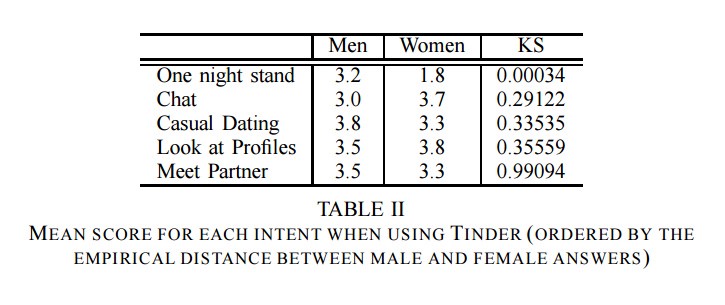
Free format of profile without any questionnaire to fill in like on the traditional dating websites creates the situation in which the service brings together people looking for different things without necessarily stating clearly their expectations in profiles, and those things differ a lot between genders. According to researchers main female interest on Tinder is to just check profiles and chat, followed by meeting partner and casual dating, while one nights stands are not being considered as a main interest. For males it?s first of all about casual dating, then, surprisingly, also about meeting partner and looking at profiles, but chatting is less interesting for them than one night stands.
Strategies:
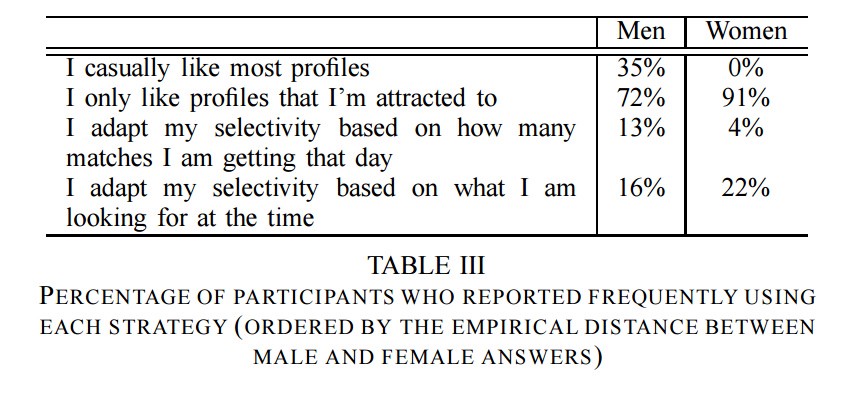
All men using Tinder (and other similar dating services) to which I ever talked to, were complaining about low match rate. So after a while some of them start to swipe right as much as possible to first get matches with women that liked them, and then think whether it?s worth writing to them. This is exactly the strategy which was proven by authors of the paper as well with 35% of males using this strategy frequently.
Female users on the contrary stay very picky in swiping right as they receive a lot of matches.
I perfectly remember how the first assumption of this difference in strategy was made by male designer at the very beginning of Tinder popularity almost 2,5 years ago, now it?s finally proven with data.
Messaging is another aspect of this process:
? Overall, we find that 21% of female matches send a message, whereas only 7% of male matches send a message. Thus, women who match with us are 3 times more engaged than men. This is likely driven by the sheer number of male matches. Overall, we received 8248 male matches, most of whom do not pursue interaction. In contrast, we garnered only 532 female matches, suggesting that they are more careful with whom they like and therefore consider it more worthwhile to send a message [24]. This is rather different to other online dating services, where messages are usually the initial means of establishing interaction (without the prior need to ?match?)?.
The interesting point is how once again it frustrates the users. Males try to get more matches by liking everyone and make ?post-filtering? ? deciding whether to write to female or not after they already got a match (and apparently often they decide not to).
What happens on the female side is that women put effort into carefully selecting the men they like, get match with them, but no further communication happens as after receiving match that man could have decided that he doesn?t like this woman. And this becomes worse and worse as if more men start liking everyone, more women get matches with everyone they like without further communication and become more picky, which make men even more aggressive in liking more, and so vicious circle begins.
Patterns of messaging are also different:

?63% of messages sent by men occur within 5 minutes of the match taking place. This is only 18% for women, suggesting that female users often wait to receive a message first. The median delay for sending messages is just 2 minutes for men, compared to 38 minutes for women. This could be driven by several factors, but it is well known that men often have to compete and differentiate themselves more as part of the mating ritual [25]. Their efforts, however, are not always particularly emphatic. Figure 5 shows the message length distribution. The median message length sent by men is only 12 characters, compared to 122 from women. For men, 25% of message are under 6 characters (presumably ?hello? or ?hi?). Consequently, it is clear that little information is being imparted in opening conversations.?
*note that expectations and strategies are based on the self declared questionnaires, not objective data, which raises questions of people being honest, people realizing their intents, being capable of measuring it, etc.
Interesting facts:
Most interesting finding for me was directly related to the strategies of users and my own previous research: ?Tinder cannot be used as an accurate tool for measuring (female) attractiveness?!
In a sense that instead of measuring attractiveness of the certain user it actually shows the blend of strategies by male users in certain context ? if all male users swipe all females they see, there is no way to understand certain female performance. (Which also creates the possible complication for Tinder work itself as they claim to have the ranking system which influences which users are being shown to whom based also on how much are they liked by others. It cannot be considered reliable based on matches from males who swipe right every profile they see.)
So my research from before can be considered relevant only in part of counting my own attraction to males, while the second experiment shows not my attractiveness in different contexts, but strategies of males.
Probably this can explain drastic difference in percentage in matches that I was getting in Milan and Moscow:

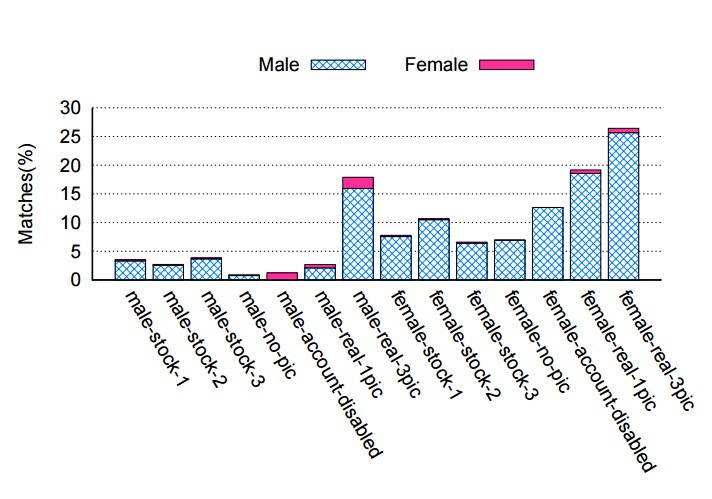
It might be that Italian users are more prone to swiping everyone right, while Russians are still picking the profiles they like.
However rate of messages from males received by me during research (54% on average) was much higher than the average of 7% showed in the paper. It is interesting that recently I?ve been observing lower matching rate and have to make new research =)
Time of matching:
Very interesting finding is that of distribution of matches during the day demonstrating Tinder users active hours:
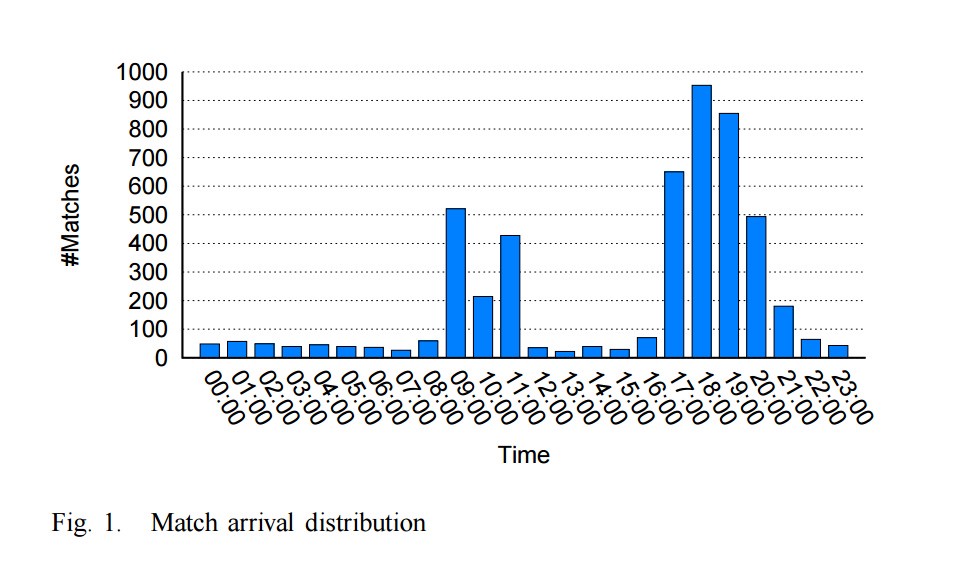
The peaks here correlate with daily commute hours which automatically provides insights on user location in the transport and therefor some geography of Tinder use not being related to more regular points of encounter like bars and recreational spaces.
Hybrid space:
As much as the paper brings interesting points on user behaviour in the on-screen interaction, we cannot forget that final goal of all dating services and related activities is getting some encounters or relationships, and so far researchers tackle only minor aspect of it ? how many matches have finished in ?real-world meet up? (note the use or the word ?real? here while actually referring to ?physical?;)). But there is no data on how many matches finished in which kind of further relationships.
What?s the most interesting for me personally is how the digital interface affects communication in physical world, this point would require a very different kind of a qualitative study.
and finally:
HOW TO IMPROVE YOUR PERFORMANCE ON TINDER:
- Get 3 or more pics in your profile (proven by data):

2. Write a bio, and not super short one (proven by data)
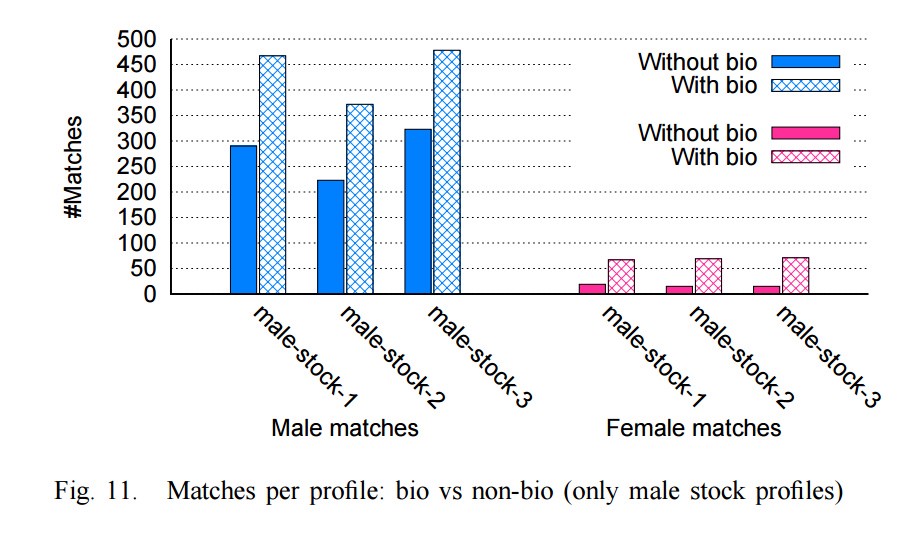
?Without bios, our male stock profiles received an average of 16 matches from women; this increases four-fold to 69 with a bio. The number of matches from men also increases, but far less substantially (by 58% on average).?
3. Be more clear about your intents (if you have them clear for yourself at all) ? this will help to avoid frustrating communication for both parties
4. Have better photos ? assumption based on the news about Tinder rankings and claimed by some users ttying changing their pics ? if more people like your profile you get showed to the better profiles!
Read more of my stories in the blog https://medium.com/yulyas-blog
